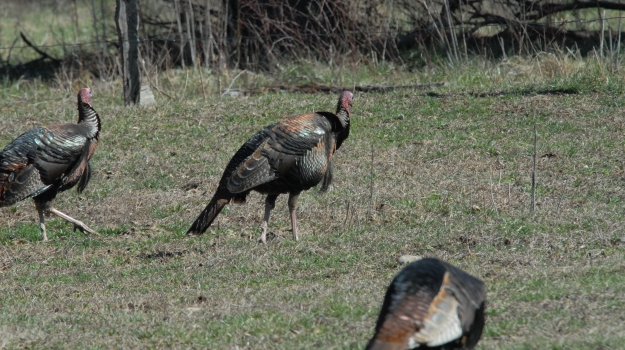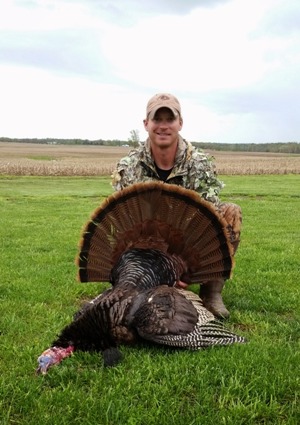
In 2016, we didn’t have as many gobblers to hunt as we'd had in previous years. I'd been talking to one of the state’s wildlife biologists and asked him, “Why do we have some years where we have booming turkey populations, and some years when we don’t seem to have as many gobbling turkeys as in the past?” He answered, “I don’t know, but seeing the gobbling turkey population go through a boom or a bust scenario isn’t unusual.”
I've learned how to determine about how many gobblers I'll have to hunt before the season arrives by using trail cameras. During the years when I know the turkey population is down, we don’t harvest as many gobblers deliberately, as we do when the population is up. We usually have family and friends come in during turkey season to hunt with us. When I know the turkey population is down, we don’t invite as many people to hunt our land as we do when populations are up.
 I've got about 3,500 acres where I can hunt turkeys. When the gobbler numbers are up, we usually take about 20 something gobbling turkeys; but when I know turkey numbers are down, like last year, we only took 14 gobblers. I determine the number of gobblers we’re going to take from my trail camera pictures. I have set up my trail cameras around field edges. I'm not trying to look at how many hens and how many gobblers I have. I only study pictures of the bachelor groups of gobblers that I get. For instance, last year, I only saw groups of three or four gobblers coming into the fields - not a very big group of gobblers. In previous years, I’d seen bachelor groups of 12 to 15 gobblers. This 2017 season I'm seeing five to six different groups of gobblers with eight to 10 gobblers in each group.
I've got about 3,500 acres where I can hunt turkeys. When the gobbler numbers are up, we usually take about 20 something gobbling turkeys; but when I know turkey numbers are down, like last year, we only took 14 gobblers. I determine the number of gobblers we’re going to take from my trail camera pictures. I have set up my trail cameras around field edges. I'm not trying to look at how many hens and how many gobblers I have. I only study pictures of the bachelor groups of gobblers that I get. For instance, last year, I only saw groups of three or four gobblers coming into the fields - not a very big group of gobblers. In previous years, I’d seen bachelor groups of 12 to 15 gobblers. This 2017 season I'm seeing five to six different groups of gobblers with eight to 10 gobblers in each group.
Because I hunt the same property every year, I've learned where turkeys come into and go out of a field. Those entrance and exit points are where I set up my trail cameras before the season to get good pictures of the bachelor groups. From the trail camera pictures, I can determine the number of gobblers and generally the sizes of their beards. Oftentimes those bachelor groups of gobblers will be out in the same fields with a flock of hens. Before the season, the toms really don’t have mating on their minds. They just happen to be in the same place at the same time.
Our property has quite a few soybean, wheat, corn and grass fields. The grass fields are cut close to the ground for hay and to provide a place where the birds can feed. The turkeys seem to prefer the soybeans, the wheat or the grass fields to feed. In the early season, they don’t feed as much in the corn fields.
To use this technique to check out the number of gobblers you'll have for the coming season, make sure that you don’t have your cameras facing to the east or the west where the sun will be shining right into the camera’s lens. Besides being able to census our gobbler population by using our trail cameras, we’ll learn where we need to set-up during the season, based on the way the turkeys come to the fields in the mornings and in the afternoons. But once the hens start laying eggs and staying on their nests, the gobblers will begin traveling and expanding their territories, looking for one or two hens that are late coming into estrus. This is the time of year that I search for gobblers in places where I've never seen turkeys before.



























